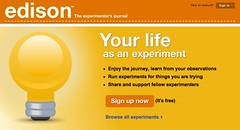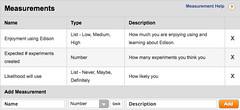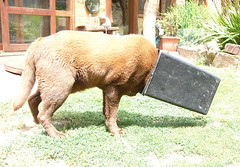
In How to Track Wisdom, Alex asks about how self-tracking might help us to get wiser, and gets some great responses. Here's my take. I'd love to hear your thoughts.
In Think, Try, Learn I claim you can track almost anything (hopefully debunking a self-experimenting myth), though coming up with specific metrics may require some creativity. My thought is that the relationship between self-experimenting and wisdom is direct, and that experimenting makes a good tool for becoming wiser.
Let's start with a definition:
- The quality of having experience, knowledge, and good judgment
- The soundness of an action or decision with regard to the application of such experience, knowledge, and good judgment
- The body of knowledge and principles that develops within a specified society or period
This provides some clues. First, we gain wisdom through experience, which is exactly what experimenting is about. In that sense, gaining experience is built in because the whole idea is to try things (i.e., to make changes), measure what happens, and then learn from it. Put another way, experimenting plants the seeds for wisdom to sprout.
Second, we gain knowledge because we learn a lot when we are excited about a topic. In the self-experimenting case, our motivation stems from the subject being ourselves. My first step when I design an experiment is to research the issue to understand possible cause-effect relationships, and then choose a starting point of something to try changing. For example, when researching improving my sleep, I learned about the importance of having a regular routine and going to bed as soon as I first feel tired (see Install a new bedtime sleep routine in Edison). Because you're putting the knowledge directly to use in a personally relevant way, it sticks. Just ask someone about an experiment they tried, and you'll see their eyes light up when they share what they learned.
But what specifically should you track? A process that's helped me get insights into my (often irrational) behavior is to model my thinking, put it to the test, and adjust according to what conflicts (or not) I discover. A primary application is in making decisions. I think that every decision has an underlying model or theory that it's based on, which makes for a natural test:
- Write down your decision when you make it, including a short analysis of what you think's going on in the situation, along with your predicted outcome,
- Follow the consequences long enough for them to mature, and then
- Compare the results to your theory when you started, dissect the differences, and learn from it.
I've found that over time this helps me improve my accuracy and understanding of how to world works. It also helps with anxiety, which makes decisions stressful and difficult. By tracking the decision I get some relief through objectivity. Sometimes it even changes my fear into curiosity, because I honestly start to wonder what will actually happen. For fun I'll occasionally assign probabilities to possible outcomes, which usually leads to surprises, such as a less likely one happening, or one happening that I didn't expect at all. This has also helped be more optimistic, since I usually assume the worst, but things don't always work out that way. Finally, this helps to make explicit any hidden biases and assumptions that are at play, such as my noticing how pessimistic I can be.
The tool I use for tracking this is my experimenter's journal (in my case a big text file), where I tag each decision made, then come back to it later and update them with my conclusions. I've been doing this for years, and you can read more in my old post, A key to continuous learning: Keep a decision log.
Another exercise that's been helpful in facilitating wisdom is tracking lessons I've learned. I use them two ways. First, capturing the lesson cements it in my mind and helps to take the sting out of unpleasant ones, and second, tagging it makes it easy to review ones I've made so I don't make them again! Read more at Some thoughts from tracking "lessons learned" for a year.
Finally, I think the experimental mindset can permanently change how we look at the world by switching our thinking from having answers to asking questions. I think every experiment should start with a question, which puts us into a learning mode that makes us open to changing our thinking and behavior. This differs from being stuck in an echo chamber where you get deeper into a mental rut by hearing the same answers repeatedly - a real risk of how we use the internet.
 Sunday, March 6, 2011 at 11:25AM
Sunday, March 6, 2011 at 11:25AM 






